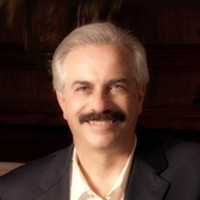"I will deal with Congress and the courts as co-equal branches of government." That's what Barack Hussein Obama, former law professor and self-proclaimed "constitutional scholar," said in his defense of closing the terrorist detention facility at Guantanamo Bay.
I won't address the relative merits of his decision to close a base holding terrorists when he has no place to put them. I'll save that subject for another day, since he has clearly lost that debate with his own Democrat-dominated Congress and the American people.
But I want to deal with this notion, put forward by a graduate of Harvard Law School, that we have three "co-equal branches of government" in the United States. Quite simply, we do not — never have and never will.
Oh, I will admit that this has become something of a mantra among those who would like to rewrite our Constitution or ignore it altogether. But there is simply nothing to be found in the Constitution, or any other founding document, that would support such an idea. And there is plenty to demonstrate it is a flat-out myth.
The Constitution spells out very clearly the distinct powers of three branches. It begins with the legislative branch — the Congress. It would be hard to miss that this is the only branch of government with law-making authority. You don't even need to read the Federalist Papers to grasp the intent of the founders: Congress was designed to be the most powerful branch of government. I defy anyone reading this article to find any hint among the voluminous writings of the founders that would suggest otherwise.
The next branch of government described in the Constitution is the presidency. That the founders did not want the president to become too powerful is without question among sober, non-deluded, objective students of history and the Constitution. But you could certainly make the argument that the executive branch of government would be second to the legislative in authority.
Then comes the judicial branch. Even though its powers were strictly limited by the founders, they still worried that it would exceed its restrictions. And, indeed, it has.
But note how the powers of each branch are "different." How can different powers ever become equal? Yes, the three branches were established to diffuse power — but not equally. There were some among the founders who wanted co-equal branches of government. They lost the debate, and they knew it. They acknowledged it.
I admit that schoolchildren are misinformed every day that we have three co-equal branches of government. I admit that it is something of an article of faith. But it is a dangerous deception, one of many that must be shattered if we are ever to re-establish our constitutional moorings.
If ever there were a time to rediscover them, it is now.
Obama is exceeding his authority as president every single day. I suspect that's why he played the "co-equal" card. He wants to think of himself as the co-equal with 535 legislators in Congress. Many Democrats also like to portray the Supreme Court as a co-equal branch of government because it is useful to them to "make law" through the judiciary when they can't muster the votes to do it legislatively.
If the founders wanted three co-equal branches of government, we would have them. They didn't, with good reason, and we don't. This is nearly as important to understand as the fact that the Constitution places strict limits on the powers of all branches of the federal government, including Congress.
In fact, that is what the Bill of Rights is largely about — protecting the rights of individuals and powers of the states from encroachment by a central government.
Obviously, we have broken trust with the Constitution. But if we are ever again to be free people, we have to rediscover the inspired genius of our founders and challenge the kind of shibboleths being put forward by today's self-proclaimed "constitutional scholars" — especially Barack Hussein Obama.
To find out more about Joseph Farah and read features by other Creators Syndicate writers and cartoonists, visit the Creators Syndicate Web page at www.creators.com.






View Comments